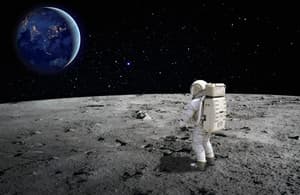Which of these statements proves that sound can travel through solids?

Important Questions on Sound
An astronaut is moving in space when a big explosion occurs about a hundred meters behind him. How will the astronaut come to know about the explosion?

The sound wave is a longitudinal wave. Longitudinal waves are those waves in which the particles of the medium vibrate parallel or antiparallel along the direction of propagation of the wave. The longitudinal wave travels with the formation of 'rarefactions' and 'compressions'. Compression is the part of the wave in which the particles of the medium are closer than they normally are. Here, the density of the medium is more than the normal density and volume decreases momentarily. Rarefaction is that part of the wave in which the particles of the medium are farther apart than they normally are. Here, the density of the medium is less than the normal density and the volume increases momentarily.
In the figure given, compared to wave P, wave Q would be _____.

